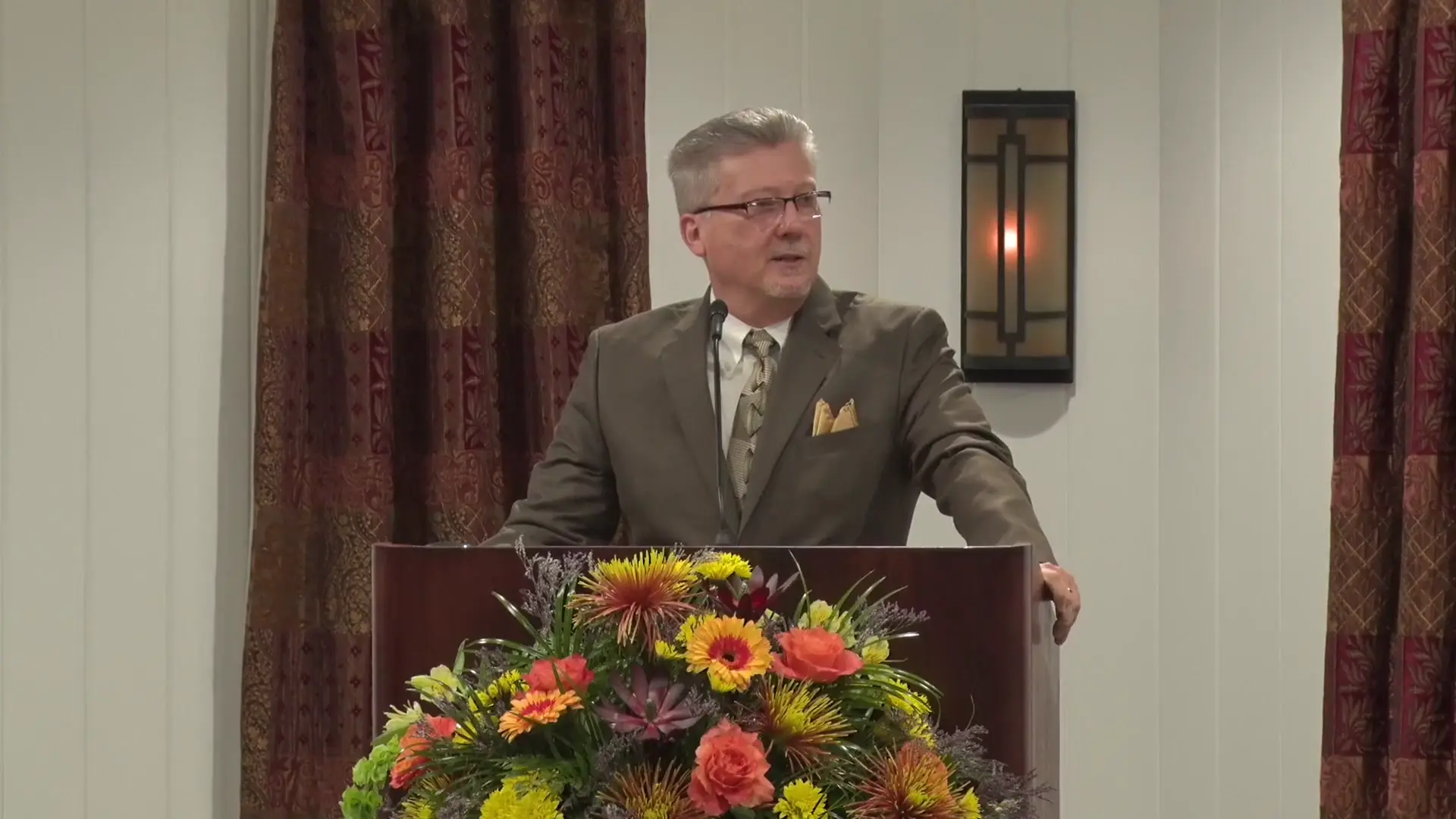Filter by Categories
Jesus Christ, the Bearer of Sin
Sermonette by David C. GrabbeAs God leads us through conversion, He challenges our understanding of His nature, and accepting these challenges sharpens our vision of Him. A critical aspect of this process involves recognizing the harsh reality of Christ's sacrifice, particularly His role in bearing sins. In Leviticus 16:21-22, the high priest lays the iniquities, transgressions, and sins of Israel on the head of the azazel goat, which then bears them into the wilderness, symbolizing the removal of sin. Similarly, Isaiah 53:4-6 prophesies that the Messiah would bear our griefs, carry our sorrows, and have the iniquity of us all laid upon Him, enduring wounding and bruising for our transgressions. Isaiah 53:11-12 further confirms that He would bear the iniquities of many, justifying them through His suffering. I Peter 2:24 specifies that Christ bore our sins in His own body on the tree, experiencing extreme suffering, shame, and anguish during those hours, not merely as an abstract act but as a real, physical endurance of sin's effects. Hebrews 13:12 notes that He suffered outside the gate, paralleling the azazel being led outside the camp, emphasizing that His bearing of sin was a prolonged and painful process. II Corinthians 5:21 reveals the startling truth that God made Him who knew no sin to be sin for us, aligning with the azazel's role as a representation of sin. Galatians 3:13 adds that Christ became a curse for us, fulfilling the dreadful role symbolized by the azazel, as He hung on the tree bearing our transgressions. This bearing of sin by Christ was not just about death but involved unparalleled disfigurement and agony, reflecting the deep corruption sin causes. Through His stripes, as mentioned in I Peter 2:24 and Isaiah 53, spiritual healing is provided, turning us back to the Shepherd despite our straying. Matthew 27:45-46 captures the culmination of His suffering, crying out in forsakenness, underscoring the immense burden He bore. Acknowledging this reality of Christ's sacrifice—becoming sin and a curse—is essential to understanding the depth of what He endured for our reconciliation with God.
Sins Borne Away
Sermonette by Richard T. RitenbaughThe Day of Atonement represents both a blood sacrifice for covering/cleansing and a means of removing sin permanently from the camp of Israel.
The Burden of Sin
Sermon by Charles WhitakerThe Scriptures prove that Christ alone bears our sins and takes them from us; we have no power to cast our burdens upon Christ, nor dump sins on the cross.
Why Two Goats on Atonement? (Part Two)
CGG Weekly by David C. GrabbeIn the Day of Atonement ritual, the first goat's blood cleansed the altar of sin while the azazel goat took them away. Christ fulfilled both roles.
Is Barabbas the Fulfillment of the Scapegoat?
CGG Weekly by David C. GrabbeBecause of Matthew's inclusion of a number of Day of Atonement-related symbols, one theory holds that Barabbas was a type of the scapegoat (azazel).
The Peculiarities of Atonement
CGG Weekly by Richard T. RitenbaughFasting teaches us to realize just how dependent we are on God. Every day, every hour, every minute, He supplies us with everything we need for life.
Inventing Goddesses and Demons (Part Three)
CGG Weekly by David C. GrabbeSome modern translations of Leviticus 16 assert that the live goat (scapegoat) was a sacrifice that God commanded Israel to send to a demon named Azazel!
Understanding the Azazel Goat
Sermonette by David C. GrabbeThe goat for azazel (complete removal) bore the sins of the nation out of sight. Jesus Christ likewise had our iniquities laid on Him, and He bore them.
Who Fulfills the Azazel Goat— Satan or Christ? (Part Five)
'Ready Answer' by David C. GrabbeWhile the church of God has long taught that the azazel goat of Leviticus 16 represents Satan, this traditional view has no biblical support.

Who Fulfills the Azazel Goat—Satan or Christ? (Part Two)
'Ready Answer' by David C. GrabbeOn the Day of Atonement, the live goat bears the sins of the nation. Many think this represents Satan as the source of sin, yet Scripture reveals the truth.

Azazel: Beginnings
Sermon by David C. GrabbeWhile there is a handful of common starting places for understanding the azazel, none of them has multiple witnesses of Scripture. We must begin elsewhere.

Who Fulfills the Azazel Goat— Satan or Christ? (Part Three)
'Ready Answer' by David C. GrabbeHebrews 9 and 10 clarify the Atonement ritual of Leviticus 16. The author makes no mention of Satan, but says that Jesus bears our sins like the azazel goat.
Devil in the Details?
CGG Weekly by David C. GrabbeA mysterious commentary has been used and repeatedly re-quoted as a proof that the azazel goat represents Satan. This source warrants closer inspection.

Azazel: Observations and Questions
Article by Pat HigginsDoctrinal changes after decades of believing differently can raise questions. God reveals truth by His Spirit on His timetable and for His own reasons.

Jesus in the Feasts (Part Four): Atonement
Sermon by Richard T. RitenbaughIsaiah 53 and passages from the New Testament substantiate Christ's dual role in shedding His blood and bearing away sins, thereby reconciling humanity to God.

Azazel: Endings
Sermon by David C. GrabbeOne goat had to die for cleansing; the other goat had to remain alive for bearing the sins away. Jesus fulfilled both roles. Satan's binding atones for nothing.

Deuteronomy, Land Sabbaths, Atonement, and Third Tithe
Sermon by Ryan McClureWhat has come to light regarding reading Deuteronomy, the year of release, the Day of Atonement, the third tithe year, and Passover.
The Doctrine of Israel (Part Fourteen): Israel Redeemed
Sermon by Richard T. RitenbaughGod employs a winnowing process in selecting those who will enter the Millennium. The process includes punishment for Israel's failure to serve as priests.

The Cursed Redeemer
Sermon by Richard T. RitenbaughHanging on a tree was designated the punishment for the worst kind of sin. Jesus was hung on a tree, having fulfilled the curse of the law for us.
His Body, His Blood, and His Resurrection
Sermonette by Clyde FinkleaThere are three components to Christ's composite sacrifice for our salvation: His death through the shedding of His blood, His body, and His resurrection.
Final Words of Jesus on the Cross
Sermon by Clyde FinkleaThe seven last sayings of Christ were all determined well before the creation of the earth.
The Intercessory Character of Christ
Sermon by Martin G. CollinsJesus demonstrated the importance of intercessory prayer, a practice urged by Paul for spiritual siblings, family members, rulers, and even enemies.